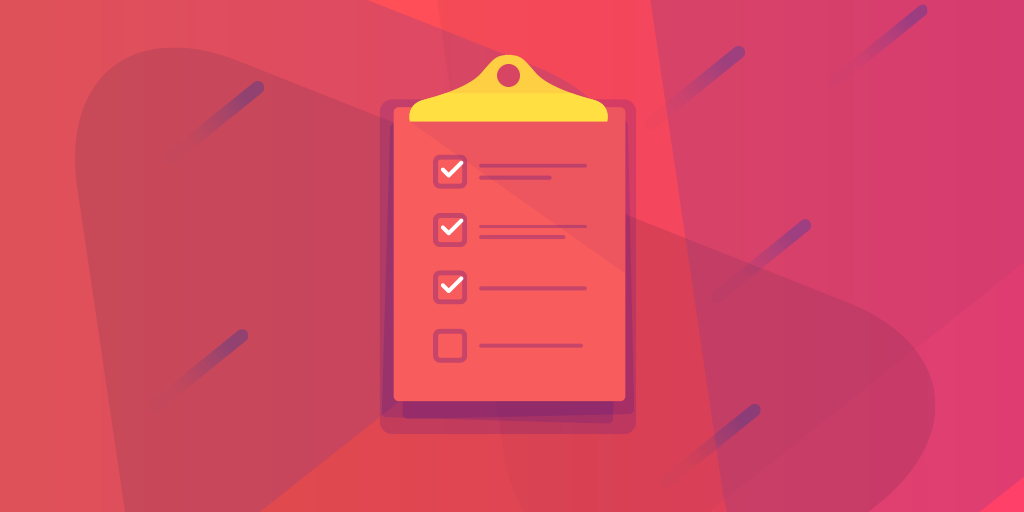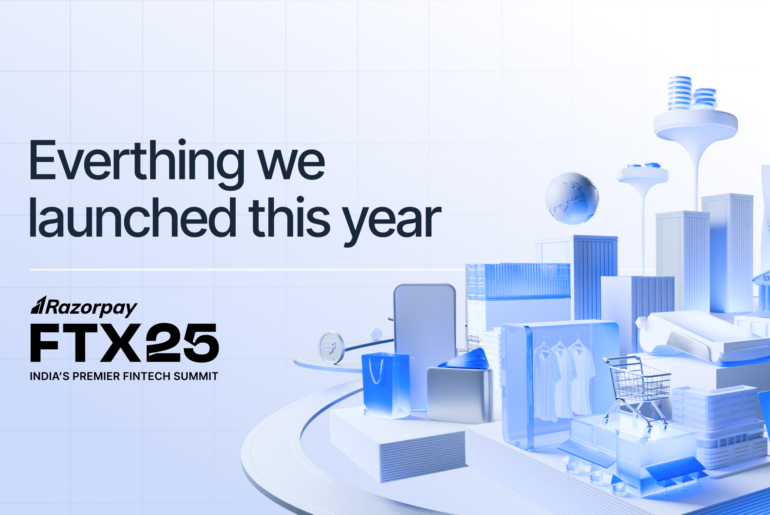Let’s say you’ve thought of a great idea, you’re looking to build a software product but you’re not sure what the next steps are. How do you transform your idea into a concrete document? You can’t just have an idea, you need a need to define it better. Its goal, functionalities, requirements, etc.
Doing this not only helps your idea come to life but also helps other people understand your product better, especially those who have to invest effort in it and build it. This document is nothing else but what is known popularly as a PRD i.e. Product Requirements Document.
What is a Product Requirement Document?
A Product Requirements Document (PRD) is the initial document describing the basic functionality of a product before development. A PRD also defines the order and any conditions of the tasks for the project.
It should be the starting point of your product, outlining its purpose, the scope of work, who your target customers are, will they interact with your product, and how to measure the performance of your product. It is an important forerunner to design and development.
Who writes the Product Requirements Document?
To write a PRD you have to involve your prospective clients, they have an idea as to what they want but lack the technical expertise to identify and implement the details. During the requirements stage, gather all the information possible from them.
Your clients will have ideas for basic functionalities, but it’s up to the product team to address these ideas and ask the right questions to define appropriate tech details.
The key to successfully identifying how a product should be developed requires collaboration between the development team and other internal teams within the organization. Product managers have to initiate and facilitate end-to-end discussions with teams like the design team, engineering team, and sales teams.
Feedback from each of these parties is crucial to product development. The technical elements of the PRD are written by the product managers but require feedback and ideation from the various other teams.
The four W’s to building your PRD:
1. What do you want to build?
You have to have a clear idea as to what you want to build and it should be communicated in a detailed manner in your Product Requirements Document. At the start of the project, this mainly comprises the core functionalities of the product that you want to build.
As ideas start to flow from multiple teams and the product details mature, this should start to cover different microservices that are required and their dependencies, the APIs that you need to hit, and any other such engineering requirements relevant to the product.
2. Why do you want to build it?
A high-level aim of why you are building a certain product needs to always accompany the what are you building aspect. This is further explained by detailed goals and objectives which we will soon discuss in the article.
3. Who’s is your Target Audience?
Not every product will have the same target audience. Some products might be needed for all your customers, some are exposed to only a niche. Some products might be built in-house for helping optimize support and other internal functions. All of these products need to have a target audience identified well in advance.
A product might be brilliant, but if it’s not usable by the target audience for any reason, it’s an exercise in futility. Some examples of target audience grouping are:
- All Customers
- Premium Customers
- Customers using a certain product
- Internal-Support team
- Internal Marketing team
4. When do you need it?
Technically, building a PRD should be the first step to developing a product.
Documenting all dependencies and internal requirements needed helps you in a big way in making a near accurate product roadmap. Also, most features or products come with some inherited pressure of either the clients wanting it or the organization needing to move on it fast.
The time spent compiling a PRD helps everyone understand the urgency and their own roles better. One should never shy away from putting a tentative launch date on your product and PRD is the one place where it should go in first.
What should a Product Requirement Document contain?

1. Goals and Objectives
The goals and objectives clearly describe the product you’re going to build. It shows the development team why they are building their product by aptly describing the product’s purpose, features, and functionalities.
The important part is to make sure you’re not creating an exhaustive list of goals and features, dreaming big is great but it’s necessary to boil it down to the minimum viable product (MVP). An MVP is the product with the smallest feature set that still addresses the user needs and creates the right user experience.
You have to address the dilemma of must-have vs good to have. Stick to the must-haves.
- When writing this section, ask yourself these questions:
- What is the purpose of this product?
- What problems will it solve?
- How will it improve the current process, or facilitate a new process?
- What is the products’ vision?
Let’s use an example of a cab service provider application
- The purpose of this product is to offer easy and accessible transport to everyone.
- The problems it will solve will be not having a vehicle of your own and being able to book a cab anytime and anywhere.
- The current process of having to call a taxi service company will be replaced with being able to do with a click of a button on your mobile phone.
- The product’s vision is to provide accessible and affordable rides to everyone.
2. User Personas and Target Users
This section will help you create hypothetical individuals that match your desired audiences. It’ll help you determine who your user is. Creating personas or identifying a Target audience helps you understand what they can do with your product, when they can use it and how they might access it.
The user personas you create don’t have to be extremely detailed, they need to be detailed enough to allow you to understand what they see the product as. Use Google Analytics to create these personas. Analytics provides important information such as the demographics of your users, where they come from, the keywords they’ve used, and the behaviors they display online.
A good user persona should always be in sync with the distribution plan for the product which the sales and marketing teams can directly tap into. Taking the example of the cab service, one of the user personas could be something like –
User details
- Name: Rahul Menon (random)
- Age: 22-35 years
- Occupation: Private Service
- Lives in Metro because of job opportunities
- Expected salary >8 Lacs per year
Business Related Details
Challenges of commute –
- Is young into his professional life and cannot afford a personal vehicle for now
- Has a personal vehicle but the commute is long and driving into traffic is strainful
- Office commute is sorted but wants to avail service for less frequent in-city travel or airport/railway station travel.
Interests
- Is active on Facebook & Twitter for ~ 10 hrs a week combined
- Has an active interest in ongoing city activities like movies, concerts, etc
- Reads one of the four major major English publications (ET, TOI, The Hindu, Hindustan Times)
- Frequents online media publications for news directly or via Social media links (Yourstory, Inc42, Livemint, etc)
- Topic of Interests: Technology, Startups, New-age gadgets, Cricket
This is supposed to serve as a sample and there are a thousand ways in which this can be improved upon. But you get the point. Knowing more about your buyer and aligning your messaging and marketing distribution towards them will get you better results.
3. User Stories
This section should focus on the key functionalities your user can carry out with the products. User stories are short descriptions of features narrated from the perspective of your user personas. A user story will look something like this:
As a [user type], I require [particular goal] so that [reasons].
User stories are useful as they provide pointers that can serve as your eventual requirements. These stories help shape the architecture of your content and design.
Follow these steps to further your product without getting drowned in too many stories and feature ideas.
- Only use high level and absolutely necessary stories, also known as epics which can later be broken down into smaller segments.
- Keep your stories short and to the point.
- They should explain what your customer needs and why
- Keep in mind that they have to be user-centric.
Technical Designs and Specs Needed in a Product Requirements Document
This section describes the technical process behind the product and what your product is capable of. The more you’re clear about how your product should work and what functionalities you’d like your product to provide, the easier it will the developer to build it for you.

1. Wireframes
A wireframe is a sort of a blueprint that shows you the layout of a page outlining the size and placement of elements and features on a page. This is very useful as certain issues may only surface when you visually represent your product. You may remove features when you get to the wireframing stage.
There are many tools that help you wireframe, take a look at this example.

This is a classic case of the pen and paper being your wireframing ‘tool’ which to be fair works brilliantly if you want fast-paced action. Various tools exist for wireframing, making more mature mockups or even high-fidelity mockups. It’s often a function of the processes that you have set in-house and how the product design responsibilities are segregated between product, design, and engineering teams. So decide on what’s best for you as an organization.
2. Dependencies
It’s important to keep in mind the impact your new product will have, and make sure it is released without disrupting existing products. Make sure you find out if the new product will impact anything else live on the platform or if it will break any of the existing frameworks.
Keep in mind that no one will be interested in mundane or repetitive product ideas or features. Bring something new to the table and ascertain that this new product is unique and different from the existing processes.
Managing dependencies is a crucial aspect of product development. This effectively helps the organization be more productive, make well-informed decisions, improve the predictability and quality of your product releases.
3. Metrics
How do you know if your product is doing well? Or if the features you’ve introduced are actually being used? What is the frequency of it being used? Or how users are interacting with your product. This is where metrics come in. It is crucial to track metrics to measure the success of your product.
Your Product Requirements Document (PRD) has to state what metrics you will be tracking, how you plan on tracking them, and the success criteria of your product. That is what your product has to meet to be deemed successful.
Too often, we see that this step is not given as much importance as it should be. Try assigning quantitative metrics as much as possible to your goals. Having too many quantitative goals also may dilute the focus so take up a small number of most important goals, say 2-4 and stick to it.
4. Release Criteria
A release criterion is a list of prerequisites that have to be met by the product in order for it to be ready for public release. The most important feature of a release criteria is that it needs to be reviewed and approved by all internal stakeholders.
What comprises release criteria?
A percentage of the originally decided functions that need to be present in the final product.
Testing coverage level – Complete Alpha and Beta testing to make sure there are no bugs. Also, determine how many QA tests were successful as opposed to those that ran into issues.

It’s not absolutely necessary to know when exactly your product is going to get alpha and beta testing, but you should plan on doing it sooner rather than later to get user feedback. Discuss product testing and QA issues with your developer.
Internal Training – Once your product is developed, a knowledge transfer of what the product entails and what it does has to be conducted within internal teams such as sales, operations, and operations support. It is of utmost importance for these teams to know the new product inside out as they will be facing the end customers. A thorough analysis of all the product features will help facilitate the marketing of the product.
5. Post-Release Retrospect
Sorry to inform you but your process of building a Product Requirements Document (PRD) is the initial document describing the basic functionality of a product before development. Learn how to write great PRDs and get great examples of product requirement documents and functional specs. PRD and a product don’t end at the release.
Post-release is an important time. You have to compare your metric expectations vs reality and learn from the data you compile. What can you do better? What worked and didn’t work. Where do you go from here, what’s next?
Your product doesn’t end at one version, people’s needs keep changing and our product needs to stay ahead of the curve. Start to iterate V2 of your product. Add more features and make it better.
So there you have it, follow these steps and we assure you an effective PRD that will save you both time and money. As well as get you the results you expect and want.
FAQs of Product Requirements Document
1. What is included in a product requirement document?
Since a product requirement document showcases the product you are about to build, It includes the specific information like its purpose, features, functionalities, and behavior.
2. What are MRD and PRD?
A market requirement document defines what customers need and how the product will provide the desired requirement. Whereas a product requirement document describes how the product should be built. It acts as a guide for broader cross-functional teams (such as design and engineering) to understand what the product should achieve.
3. Why are product requirements important?
A product requirements document specifies the purpose of a product or feature and explains what the product should include. Without this document, product teams are poised to fail because they have no blueprint of what will be considered while building a successful product.
4. How to write a good PRD?
Define the purpose of the product > break the purpose down into features > Set the goals for efficient product release > Determine your timelines > Review the document with relevant dependencies.
5. Who is responsible for product requirements?
A product manager is usually responsible for handling this document. He/she provides product direction and sets the goals for product releases.



